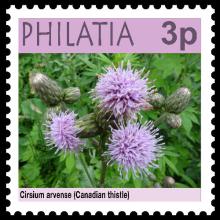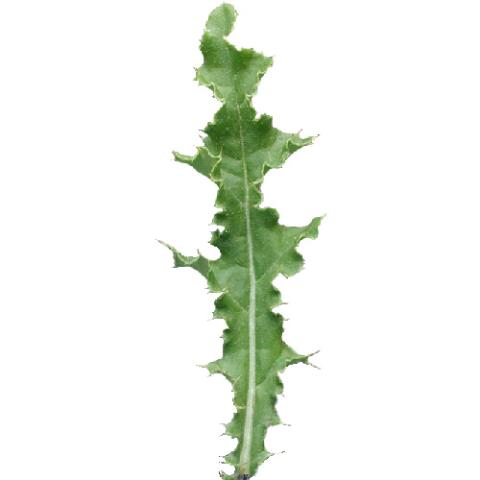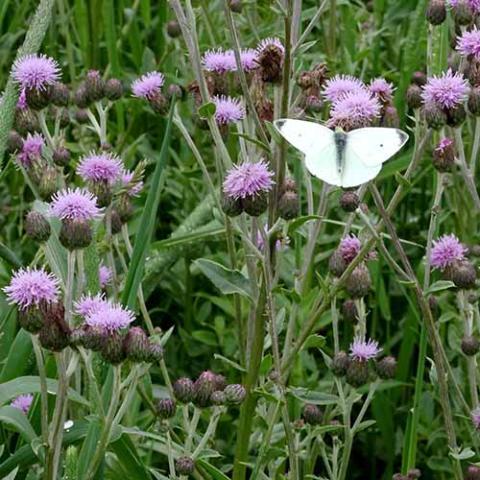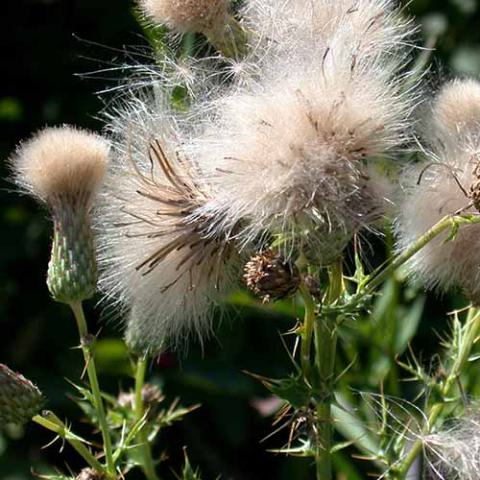NAME(S)
TAXONOMY
PLANTAE ID
THERAPEUTIC
Philatia
Issued:
Stamp:
Cirsium arvense
Philatia
Issued:
Stamp:
Cirsium arvense
Philatia
Issued:
Stamp:
Cirsium arvense
Genus species (Plantae): Cirsium arvense
Cirsium arvense is a perennial species of flowering plant in the family Asteraceae, native throughout Europe and western Asia, northern Africa and widely introduced elsewhere. The standard English name in its native area is creeping thistle. It is also commonly known as Canada thistle and field thistle.
The plant is beneficial for pollinators that rely on nectar. It also was a top producer of nectar sugar in a 2016 study in Britain, with a second-place ranking due to a production per floral unit of (2609±239 μg).
Description
Cirsium arvense is a C3 carbon fixation plant. The C3 plants originated during Mesozoic and Paleozoic eras, and tend to thrive in areas where sunlight intensity is moderate, temperatures are moderate, and ground water is plentiful. C3 plants lose 97% of the water taken up through their roots to transpiration.
Creeping thistle is a herbaceous perennial plant growing up to 150 cm, forming extensive clonal colonies from thickened roots that send up numerous erect shoots during the growing season. It is a ruderal species.
Given its adaptive nature, Cirsium arvense is one of the worst invasive weeds worldwide. Through comparison of its genetic expressions, the plant evolves differently with respects to where it has established itself. Differences can be seen in their R-protein mediated defenses, sensitivities to abiotic stresses and developmental timing.
Taxonomy
Cirsium arvense is placed in the subtribe Carduinae, tribe Cardueae of the family Asteracae. Unlike other species in the same genus it is dioecious, although male plants sometimes produce bisexual flowers. It also differs from other native North American species in having large roots and multiple small flower heads on a branched stem.
Underground network
Its underground structure consists of four types, 1) long, thick, horizontal roots, 2) long, thick, vertical roots, 3) short, fine shoots, and 4) vertical, underground stems. Though asserted in some literature, creeping thistle does not form rhizomes. Root buds form adventitiously on the thickened roots of creeping thistle, and give rise to new shoots. Shoots can also arise from the lateral buds on the underground portion of regular shoots, particularly if the shoots are cut off through mowing or when stem segments are buried.
Shoots and leaves
Stems are 30–150 cm, slender green, and freely branched, smooth and glabrous (having no trichomes or glaucousness), mostly without spiny wings. Leaves are alternate on the stem with their base sessile and clasping or shortly decurrent. The leaves are very spiny, lobed, and up to 15–20 cm long and 2–3 cm broad (smaller on the upper part of the flower stem).
Flower head fragrance
Every plant species has a unique floral fragrance. The fragrance that C. arvense emits attracts both pollinators and florivores containing compounds that attract each respectively. Non-native honeybees are shown to have the highest visitation rate, following other bee species in the genera Halictus and Lasioglossum. Hover flies are also commonly seen pollinating the flower heads of this plant. Florivores such as beetles and grasshoppers are commonly seen as well. The compounds found in the fragrance may not be in the highest abundance but they are highly attractive. P-anisaldehyde is found in less than 1%, yet it attracts pollinators such as honey bees. This is thought to be the result of additive and synergistic effects from the blend increasing the attraction to the plant. After pollination, it can be seen that fragrance emission decreases in C.arvense. This is regulated through a regulatory feedback mechanism depending on the pollination status of the plant. This mechanism has only been observed in pistillate plants for dioecious C. arvense. Fragrance emission increases with age.
The fragrance contains several compounds that attract diverse insects. Looking at certain butterflies species, it can be seen that the fragrance blend is highly attractive to them, being sensitive to their antennae. High antennal response are seen in consequence to the phenylacetaldehyde as well as the terpenes (oxoisophoroneoxide, oxoisophorone, and dihydrooxoisophorone) found in the blend. This was seen in both natural plants emitting the fragrance and emitting the scent synthetically. It is believed that general arousal can be stimulated through exposure of a single compound, whereas the accumulated exposure of all the compounds influence the foraging behavior of the butterflies.
Flowers and seeds
The inflorescence compound cyme is 10–22 mm (0.39–0.87 in) in diameter, pink-purple, with all the florets of similar form (no division into disc and ray florets). The flowers are usually dioecious, but not invariably so, with some plants bearing hermaphrodite flowers. The seeds are 4–5 mm long, with a feathery pappus which assists in wind dispersal. One to 5 flower heads occur per branch, with plants in very favorable conditions producing up to 100 heads per shoot. Each head contains an average of 100 florets. Average seed production per plant has been estimated at 1530. More seeds are produced when male and female plants are closer together, as flowers are primarily insect-pollinated. The plant can bloom from seed in a year then subsequently the seeds produced can emerge in the following year.
Ecology
The seeds are an important food for the goldfinch and the linnet, and to a lesser extent for other finches.[30] Creeping thistle foliage is used as a food by over 20 species of Lepidoptera, including the painted lady butterfly and the engrailed moth, and several species of aphids.
The flowers are visited by a wide variety of insects such as bees, moths, wasps and beetles (the generalized pollination syndrome).
Status as a weed
The species is widely considered a weed even where it is native, for example being designated an "injurious weed" in the United Kingdom under the Weeds Act 1959. It is also a serious invasive species in many additional regions where it has been introduced, usually accidentally as a contaminant in cereal crop seeds. It is cited as a noxious weed in several countries; for example Australia, Brazil, Canada, Ireland, New Zealand, and the United States. Many countries regulate this plant, or its parts (i.e., seed) as a contaminant of other imported products such as grains for consumption or seeds for propagation. In Canada, C. arvense is classified as a primary noxious weed seed in the Weed Seeds Order 2005 which applies to Canada's Seeds Regulations.
Uses
Like other Cirsium species, the roots are edible, though rarely used, not in the least because of their propensity to induce flatulence in some people. The taproot is considered the most nutritious part.[citation needed] The leaves are also edible, though the spines make their preparation for food too tedious to be worthwhile. The stalks, however, are also edible and more easily despined.[49] Bruichladdich distillery on Isle of Islay lists creeping thistle as one of the 22 botanical forages used in their gin, The Botanist.
The feathery pappus is also used by the Cherokee to fletch blowgun darts






